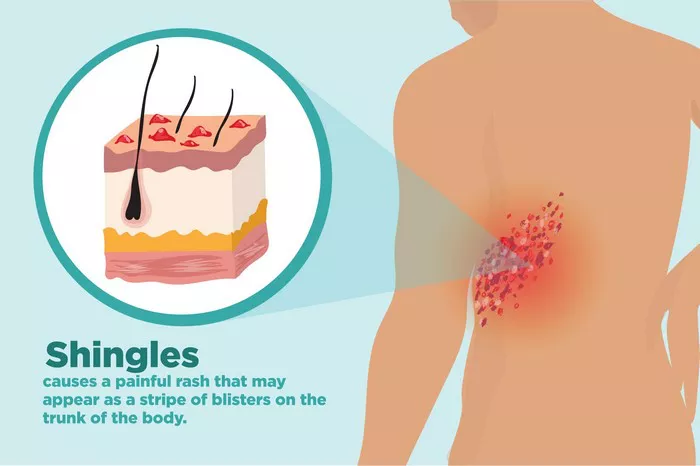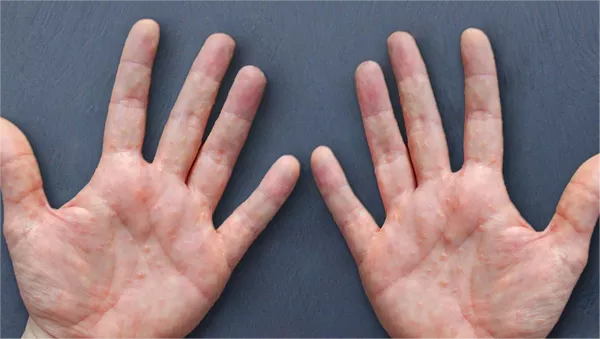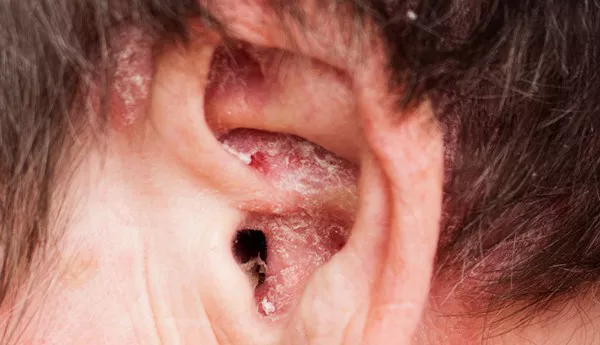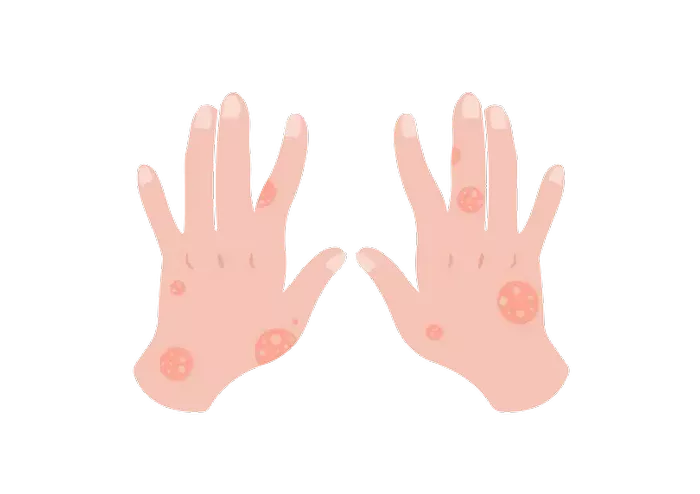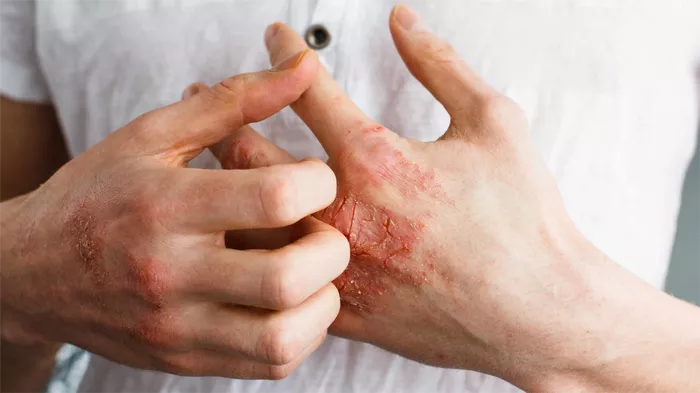Urticaria, commonly known as hives, is a skin condition characterized by the sudden appearance of raised, red welts that are typically itchy and often appear and disappear within hours. These welts, which vary in size, can develop on any part of the body, including the hands. While hives are usually temporary, their sudden onset and the discomfort they cause can be distressing. Understanding the underlying causes of hives on the hands is crucial for effective management and treatment.
SEE ALSO: What Is Dermographism Urticaria
Common Causes of Hand Hives
Allergic Reactions
One of the most common causes of hives on the hands is an allergic reaction. Allergens can trigger the body’s immune response, leading to the release of histamine, which causes the welts. Common allergens include:
Food: Certain foods, such as nuts, shellfish, eggs, and dairy, are well-known triggers for hives. For example, someone allergic to shellfish might develop hives on their hands shortly after handling or consuming it.
Medications: Drugs like antibiotics, aspirin, or ibuprofen can cause allergic reactions in some individuals, leading to hives.
Insect Stings: Bites or stings from insects like bees, wasps, or mosquitoes can cause localized hives on the hands, especially if the individual is allergic to the insect’s venom.
Latex: People who are allergic to latex may develop hives on their hands after coming into contact with latex gloves or other latex products.
Contact Dermatitis
Contact dermatitis occurs when the skin comes into direct contact with an irritant or allergen, leading to inflammation and hives. On the hands, this can be triggered by:
Soaps and Detergents: Harsh chemicals found in cleaning products can irritate the skin, causing hives.
Fragrances: Perfumes and scented lotions may contain allergens that cause hives.
Jewelry: Metals like nickel, commonly found in rings and bracelets, can cause allergic reactions in some people, leading to hives where the metal touches the skin.
Infections
Certain viral or bacterial infections can trigger the immune system, causing hives as a secondary symptom. For example:
Viral Infections: Common viruses, such as those causing the common cold or flu, can sometimes lead to the development of hives.
Bacterial Infections: In rare cases, bacterial infections like strep throat can trigger hives, though this is more common in children.
Physical Triggers
Physical factors can also induce hives, particularly on sensitive areas like the hands. These include:
Heat: Exposure to high temperatures or sweating can cause heat-induced hives, known as cholinergic urticaria.
Cold: Some individuals develop hives when exposed to cold weather or after touching cold objects, a condition known as cold urticaria.
Pressure: Continuous pressure on the hands, such as from tight gloves or gripping tools, can lead to hives in some individuals.
Sunlight: In rare cases, exposure to sunlight can cause a condition called solar urticaria, where hives develop on sun-exposed areas, including the hands.
Stress and Anxiety
Emotional stress and anxiety can exacerbate or even trigger hives in some individuals. The exact mechanism is not fully understood, but stress-induced hives are believed to be related to the body’s release of stress hormones, which can influence immune system responses.
Medical Conditions
Certain medical conditions may also predispose individuals to hives, particularly on the hands. These include:
Autoimmune Disorders: Conditions like lupus or rheumatoid arthritis can lead to chronic hives, where the body’s immune system mistakenly attacks healthy skin tissue.
Thyroid Problems: Both hyperthyroidism and hypothyroidism have been associated with chronic urticaria.
Medical Advice
While occasional hives might be manageable with over-the-counter remedies, frequent or severe cases warrant medical attention. A healthcare professional can help determine the exact cause of hives and recommend appropriate treatment. This is particularly important if the hives are accompanied by other symptoms, such as difficulty breathing, swelling of the face or tongue, or dizziness, which could indicate a severe allergic reaction known as anaphylaxis.
Treatment Options
Treatment for hives on the hands often involves addressing the underlying cause. Common options include:
Over-the-Counter Antihistamines: These medications, such as diphenhydramine (Benadryl) or cetirizine (Zyrtec), can help reduce itching and swelling.
Topical Creams: Calamine lotion or hydrocortisone cream can provide relief from itching and discomfort.
Prescription Medications: In more severe cases, a doctor may prescribe stronger antihistamines, corticosteroids, or other medications to manage symptoms.
Avoiding Triggers
Once the cause of hives is identified, it is essential to avoid known triggers. For instance, if a specific food or medication is responsible, it should be avoided to prevent future outbreaks. Additionally, using hypoallergenic products and wearing protective gloves when handling potential irritants can help minimize the risk of developing hives on the hands.
Conclusion
In conclusion, hives on the hands are a multifaceted skin condition with a wide range of potential causes, from common allergens and environmental factors to underlying medical conditions. While hives are typically harmless and temporary, their sudden onset and the intense itching they often cause can significantly impact a person’s daily activities and overall comfort. Identifying the specific triggers that cause hives on the hands is essential for effective management and prevention, allowing individuals to take targeted measures to reduce the frequency and severity of outbreaks.
Related Topics:


